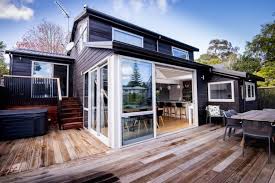House Extension are a common choice for those who want to expand your living area without having to go through the upheaval of moving. Whether you need an extra bedroom, a bigger kitchen, or an office, extending your house can give you the room you require while adding value to your property. Here’s a comprehensive guide to assist you in the process.
1. Types of House Extensions
Knowing the various types of house extensions is crucial. Common options include:
Rear Extensions extend outwards from the back of the house and can create spacious new kitchens or living spaces.
Side Extensions: Extending outwards from the back of the property, side extensions could be extremely beneficial when you have a small area.
Loft Conversions: Transforming your attic into usable space is a great way to add bedrooms or a study, without changing the footprint of your building.
Garage conversions are a good option if you have a garage that has been neglected and want to convert it into a living area can be a cost-effective method to make more space.
2. Planning Permission and Building Regulations
Before you can begin, you must be aware of the legal requirements:
Planning Permission Based on the scale and impact of your extension you might require planning permission. This is particularly the case for extensions that significantly alter the appearance of your property or are situated in conservation areas.
Building Regulations: No matter what the planning permission, any extensions must be in compliance with building regulations, which make sure that the project is in compliance with the safety and standard of structural integrity. This usually means submitting detailed plans and undergoing inspections throughout construction.
3. Budgeting and Costs
The process of budgeting for an extension to your home includes more than the construction cost. Consider expenses for:
Architectural Costs: Hiring an architectural or designer to develop elaborate plans could be an additional cost however their experience and expertise will ensure that the design meets your requirements and is in line with all regulations.
Construction Costs: The cost of materials and labor can vary greatly, so getting multiple estimates from contractors is highly recommended.
Other Costs: Be sure to think about potential costs for permits, inspections and potential issues that may not be anticipated during construction.
4. Design Considerations
When creating your extension, think about:
Integration: Make sure that the new space integrates seamlessly with the existing structure, from design to functionality.
Natural Light: Maximizing the natural light that comes through skylights or windows can make the space feel more welcoming.
Energy Efficiency: Integrate features that reduce energy consumption to enhance sustainability and reduce long-term costs.
5. Choosing the Right Builder
Finding a trustworthy builder is essential to the success of your project. Be sure to look for:
Experience and Reputation: Choose a builder who has a demonstrated experience in building extensions for homes.
Reviews and References: Look up past work and reviews of customers to assess their reliability and quality.
In short, a house extension can transform your living space and increase your home’s value. By knowing the various kinds of extensions, understanding legal requirements, budgeting wisely, and choosing the right specialists, you can guarantee that your project is successful and smooth.

